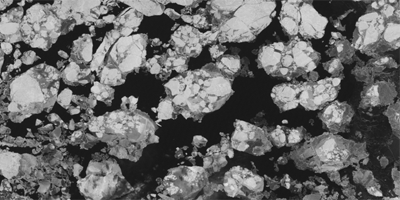How the Ice Floes Flow
For several years, climate change has been implicated in the decline of the thick Arctic Ocean ice that builds up over many seasons and its replacement by thin, seasonal ice. The thinner ice, which has increasingly melted away during the height of summer each year, suffers far more deformation and fracture than thicker ice. Unfortunately, compared to thick, perennial ice, much less is known about the physical properties of this thin, broken ice, which consists largely of separate moving flat chunks or floes.
In a paper in Physical Review E, Agnieszka Herman of the University of Gdansk, Poland, tackles this problem by modeling fragmented ice as a two-dimensional, granular gas. In this picture, the separate ice floes move on the sea surface as rigid and nondeformable entities that lose kinetic energy because of inelastic collisions between them. The author reports that the model qualitatively reproduces the kind of motion and clustering seen in satellite imagery of the Arctic; future work will emphasize more quantitative modeling as better observational data become available, in particular, how floe clustering affects mass and heat transport. Such numerical modeling can contribute vital knowledge of seasonal cycles of sea ice coverage and its involvement with global climate change. – David Voss





